The horticulturalists at Los Poblanos, give TABLE readers a magical tour of the verdant, sustainable growing fields tucked around the resort, spa, restaurant, and shop. Along the way, they points out many varieties home gardeners can try this summer.
Trading Rain for Sun to Find New Roots
I’ve had a kitchen garden for years, growing potatoes by the bucketful, green beans that happily spill out of containers, and peppery arugula that nestles in hanging baskets. My London garden is a small slice of green in an urban landscape. Bordered by brick walls on three sides and our house on the fourth, it’s a warm microclimate where temperatures rarely dip below freezing. If water is an issue, it’s too much rather than too little.
I’m trading that for a new garden in Santa Fe where conditions couldn’t be more different. The challenge for me––and any keen gardener in New Mexico––is to create a kitchen garden where water is precious and temperatures dip in the winter and soar in the summer. What should I plant and how can I make my garden thrive?
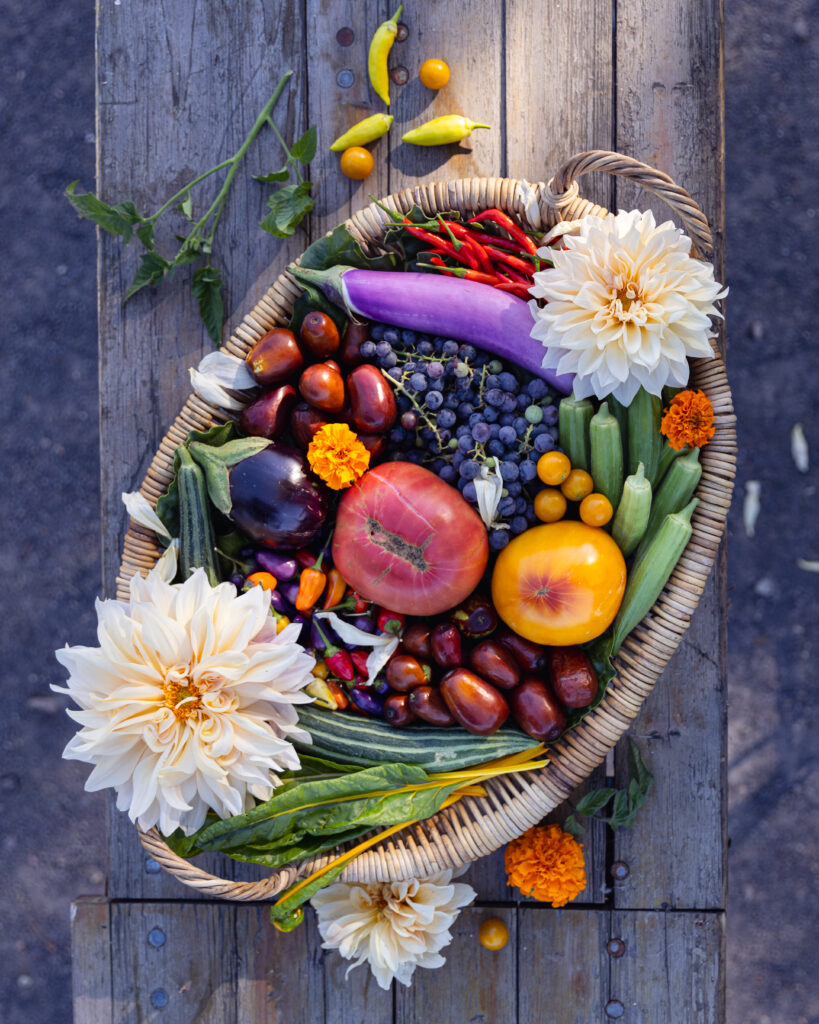
For help, I turned to the horticulturalists at Los Poblanos, whose passion for plants and Southwestern gardening is infectious. Los Poblanos Historic Inn & Organic Farm covers 25 acres in Los Ranchos de Albuquerque. It features lush lavender fields and formal gardens. About four acres are dedicated to growing food for Campo, their award-winning restaurant. They also grow herbs used in spa treatments and body-care elixirs.
Inside Los Poblanos’ Organic Fields and Heirloom Philosophy
I take a tour of the kitchen and gardens to learn how they collaborate on what they grow. Together, they focus on heirloom and native varieties adapted to withstand heat and drought. You and I might not have room for a beehive or guinea fowl to control garden pests. Still, we can learn a lot from how they garden at Los Poblanos.

In their fields you’ll find Sungold cherry tomatoes, a high-yield, super-sweet variety; deep purple eggplants like the meaty Black Beauty and the slender, paler purple Orient Charm; sweet corn, popping corn, and a variety of indigenous blue corn; and, of course, chiles like the small, spicy Aji Crystal, colorful and compact Chinese Five-Color and the mild poblano; as well as lesser known––and appreciated––plants like amaranth, with its stunning red
leaves and plumes.
Not only does amaranth add architectural elegance to the garden, you can eat both leaves and seeds. Campo Head Chef and New Mexico native Chris Bethoney suggests sautéing the leaves like chard. “Sometimes we’ll take the leaf because it’s such a beautiful red and imprint it on a tortilla or tamale,” he adds.
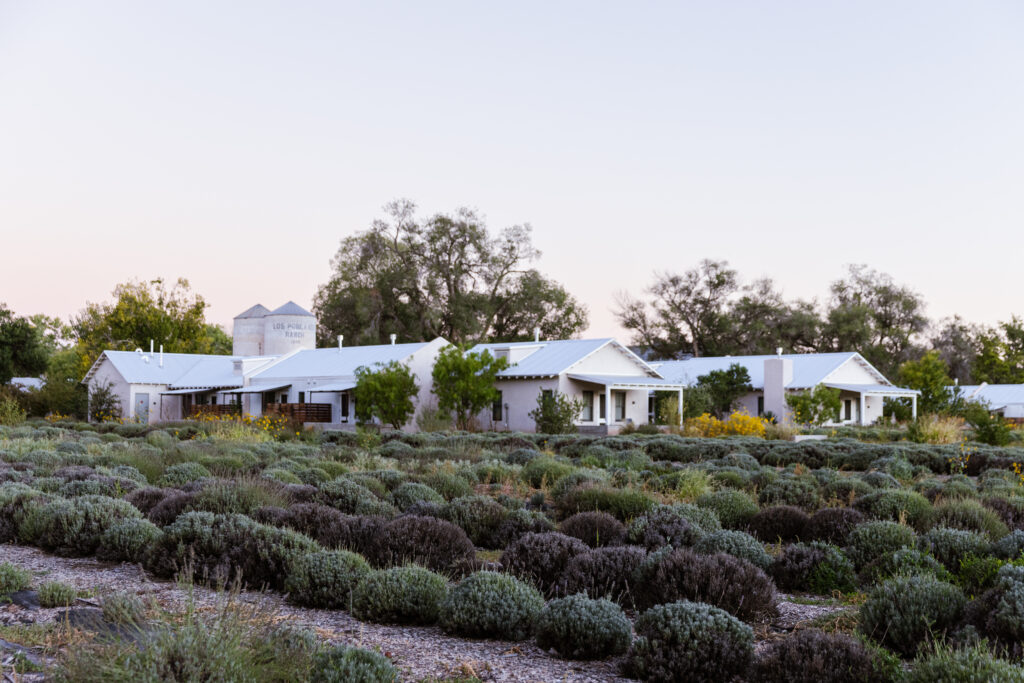
If you’re eager to grow fruit, Los Poblanos recommends peach varieties like Contender or Hale-Haven. They also suggest Jonathan apples, sour cherries, or Moorpark apricots with their pink-tinged blossoms. Or try your hand at unfamiliar fruits like the Jujube (also known as Chinese date) which thrives in a warm, dry climate and can tolerate cold winters. It’s a great pollinator plant and is super-xeric so won’t need frequent watering. (Chris has used the fruits in a pecan shortbread recipe and is experimenting with poaching them in a simple syrup.)
Cultivating with Care
As with most gardens, the best results start with the soil. “Here in the desert, we always have to add organic material.” Home composting is one of the best things you can do and it doesn’t have to be a complex or expensive system. You can start with plastic garbage cans with secure lids and holes punched in the bottoms for drainage.
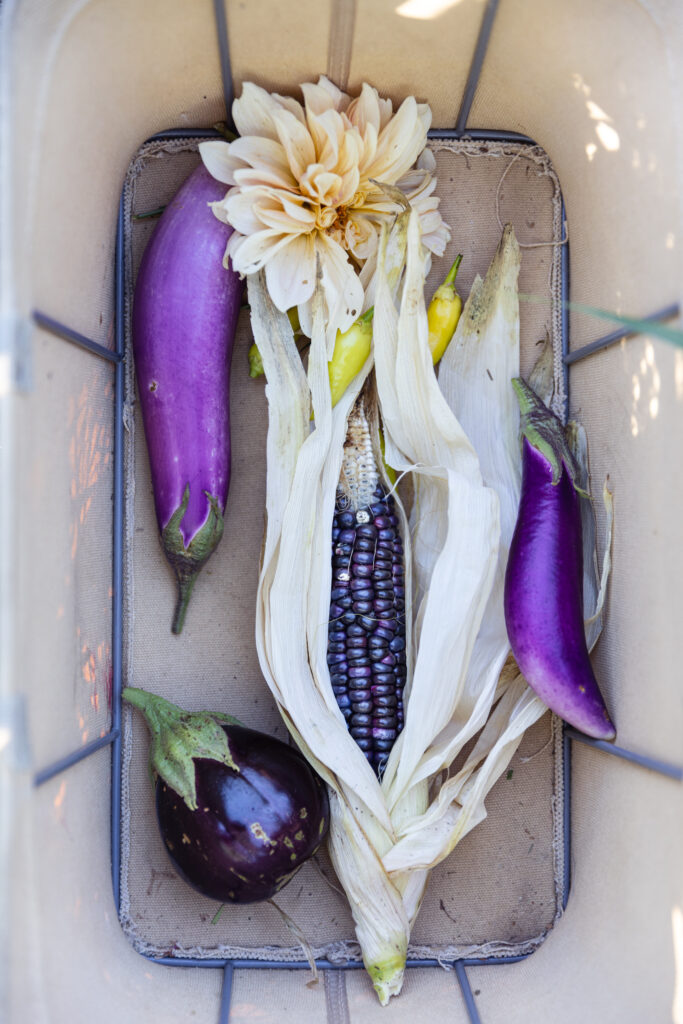
Start with dry leaves and pine needles in the base then add potato peelings, vegetable scraps and coffee grounds––almost any plant-based waste. You can even add charcoal from a fire pit, which “sweetens the soil,” I am told. Install a drip irrigation system rather than overhead watering.
The idea with drip irrigation is that you might water for an hour very slowly and deeply,” the gardeners say. Water at night when there is less ground evaporation and the roots have a chance to absorb the water. And never leave soil uncovered. “Bare soil is the enemy of any desert garden.” Cover with several inches of compost and top with a layer of barley straw. While cardoons flourish at Los Poblanos, their relative—the artichoke—is much more finicky. Both belong to the Cynara genus.
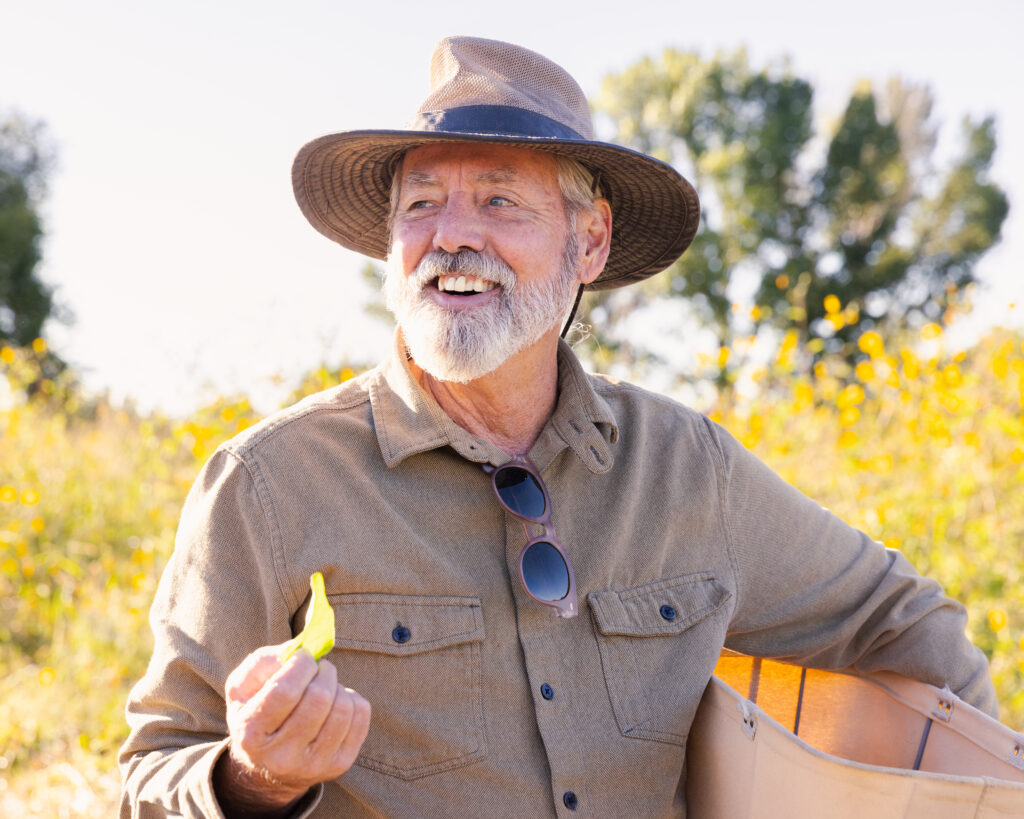
“Mother Nature is in charge, we’re not.” The gardeners plants borage, an edible flower with periwinkle blue blossoms, alongside tomatoes to deter sphinx moths. “Could be an old wives’ tale but it seems to work,” they say. Dahlias can do double duty as a cut flower and ingredient, the petals becoming an edible, citrus-inflected cup for small, ripe strawberries. Nasturtium leaves have a peppery, wasabi-like flavor, while the edible pods can be stored in salt and used like capers.

A Desert Gardener’s Mantra for Success
Choose plants that earn their place in your garden. One example is Cota (Thelesperma megapotamicum), also known as Navajo, Zuni, Hopi, or Indian tea. A member of the aster family, it has bright yellow flowers and is used to make a delicious (and medicinal) herbal tea and also as a dye plant. “Why not have kale in the beds with your shade trees or perennial flowers?” Why not indeed. “Maybe food is all over the yard?”
As we finish up our tour, the gardeners point out a tasting basket full of fresh produce the team picked that day. It’s a simple way to show visitors what’s in season and what’s on the menu that night. Think Chris’s pasta made with tomato leaves and topped with sautéed tomatoes, eggplant, garlic, and herbs—everything fresh from the garden.
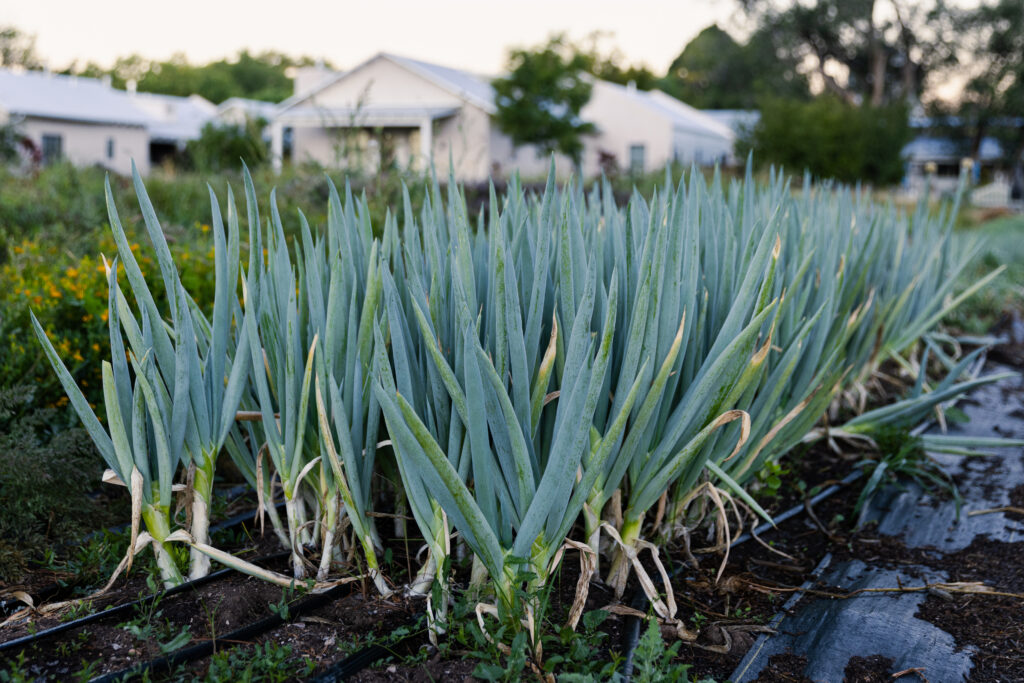
We end our tour at the Campo bar with cocktails made from Los Poblanos’ two new botanical gins. They’re crafted in the New Western style, not the traditional London Dry. That means juniper is less dominant, providing plenty of room for other aromatic plants to shine.
The move into making gin is a natural since they’ve been growing and distilling botanicals for their Los Poblanos beauty range for over two decades. But most importantly, how do the gins taste? The Western Dry gin is smooth and complex, distilled with 16 botanicals from the farm. Ingredients include piñon, rose, hawthorn, and chamomile.
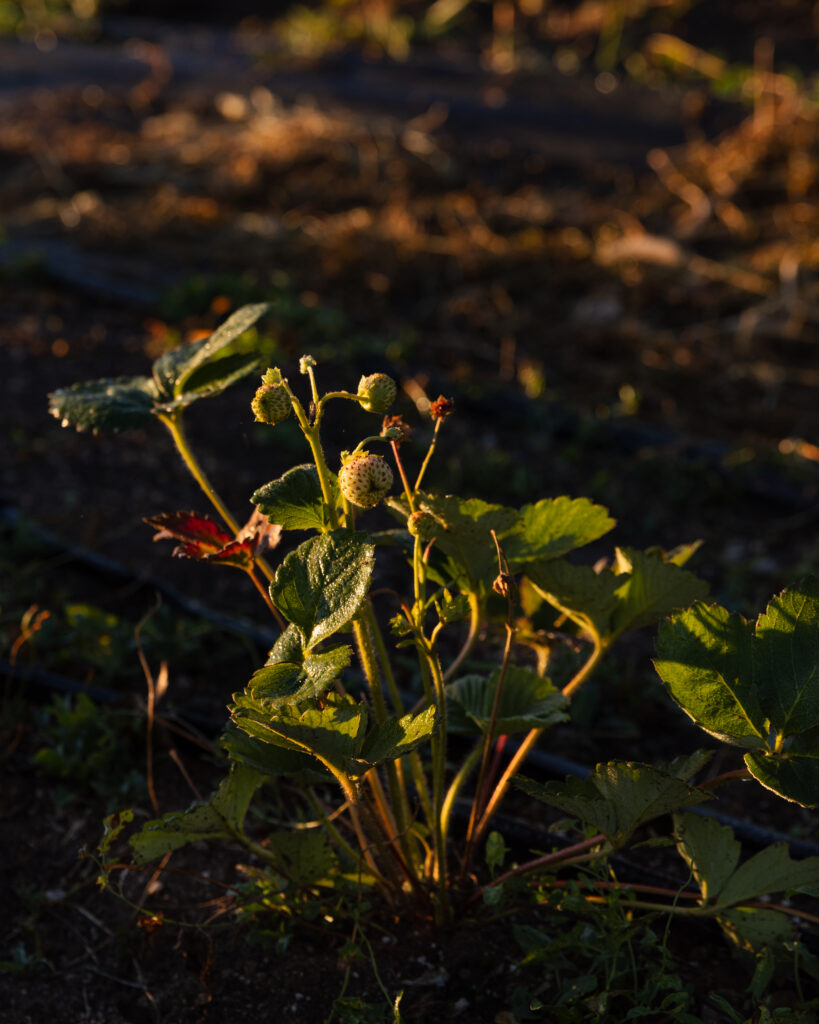
The Los Poblanos Lavender Gin is distilled with four different lavender varietals and from the first sip feels like a drinkable walk through their lavender fields. Both are quaffable treats. As we lift our glasses and toast my new garden, I ask for any last words of advice. The team responds that it’s pretty basic: “Work with nature, never against it.”
Story by Julia Platt Leonard
Photography by Tira Howard
Shot on location at Los Poblanos Historic Inn & Organic Farm
Subscribe to TABLE Magazine’s print edition.
